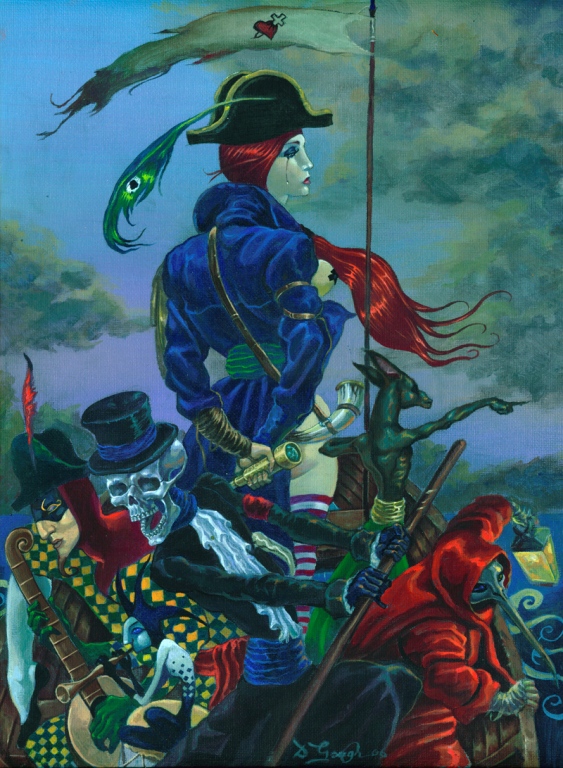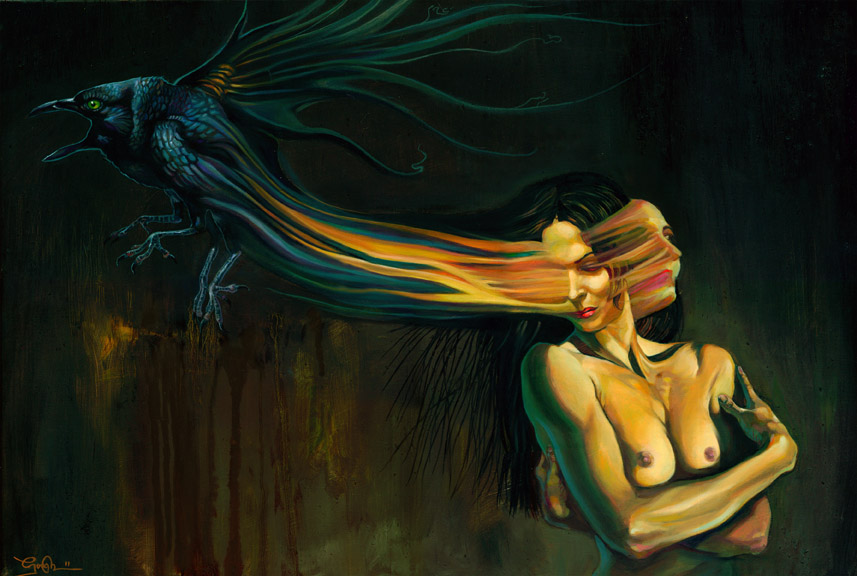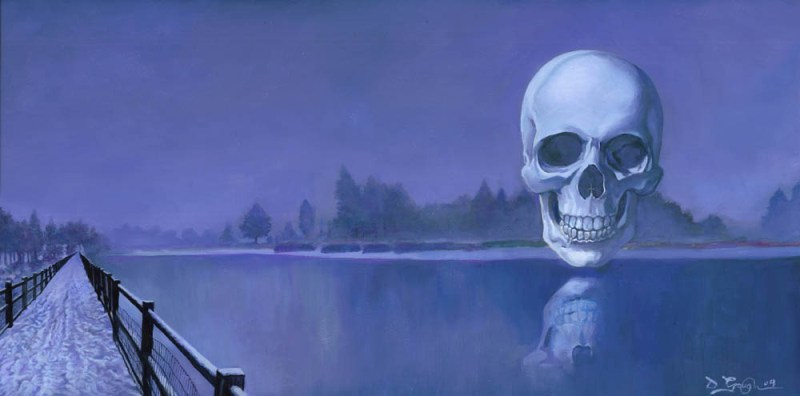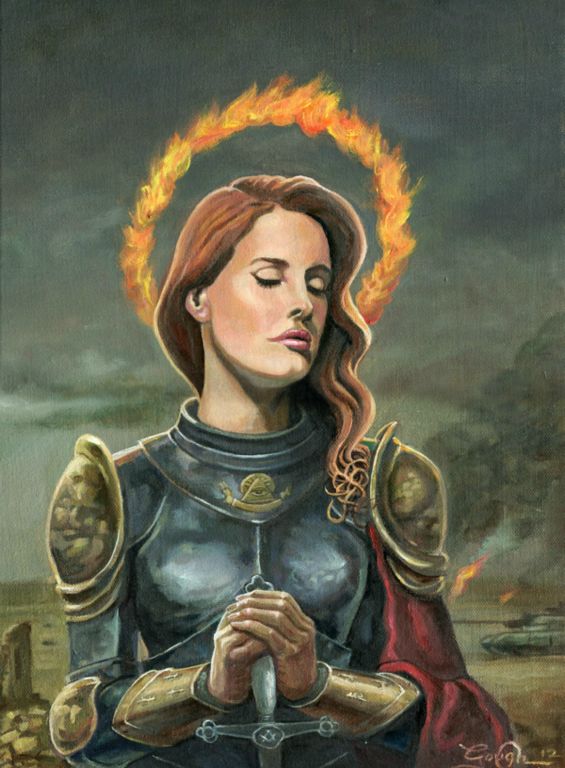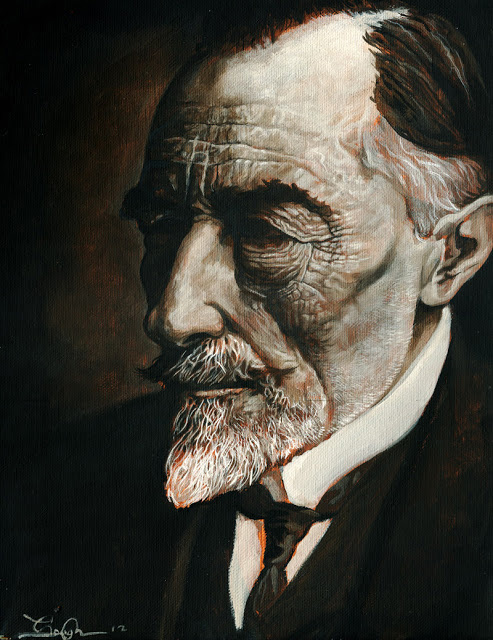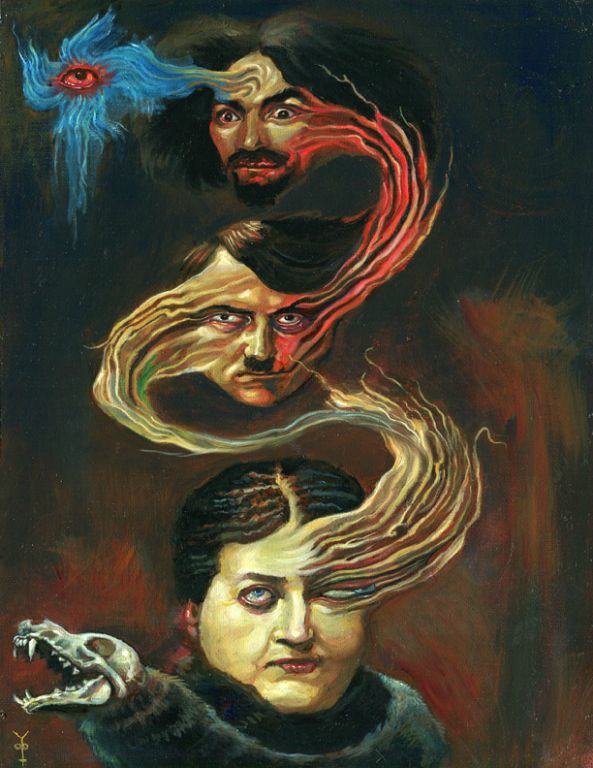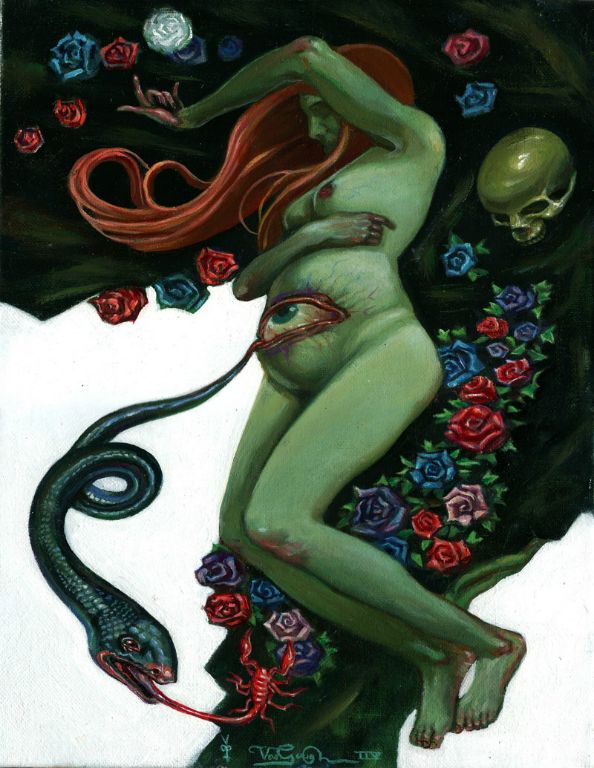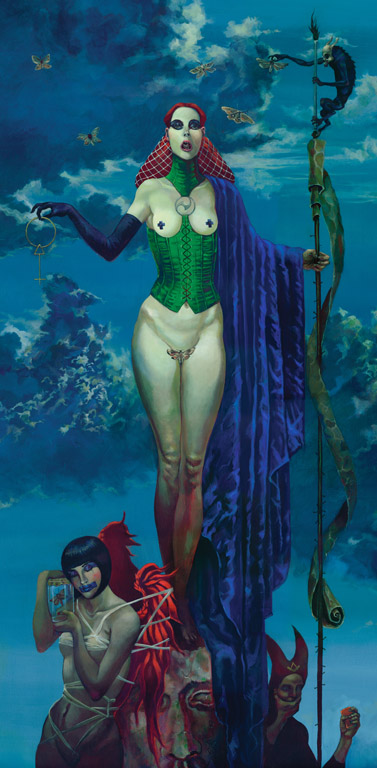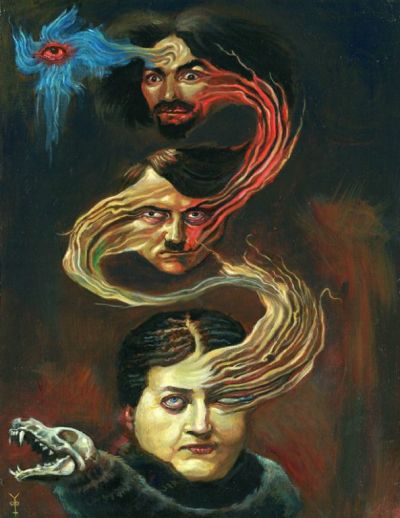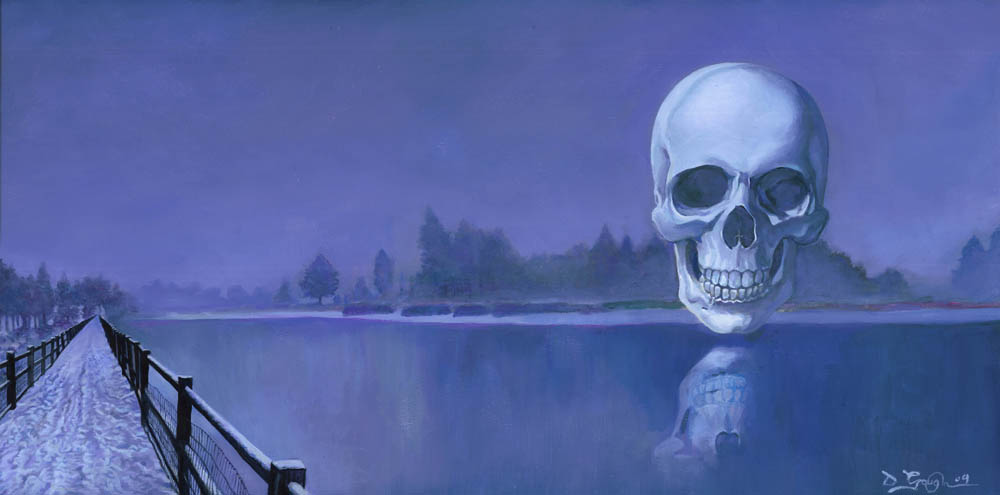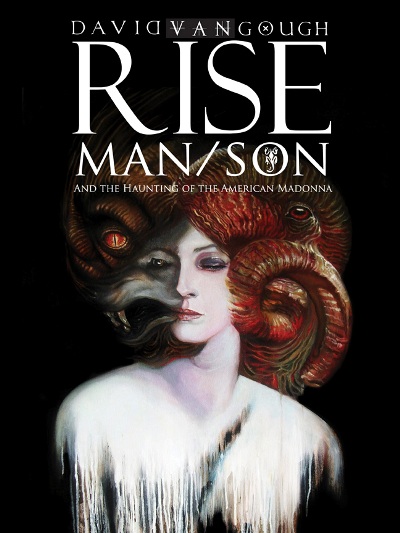Casablanca on Blu-ray
No one film will ever satisfy everyone’s opinion as being the greatest of all time. But if a decision had to be made, Michael Curtiz’s penultimate wartime melodrama, Casablanca (1943), is a worthy contender. Based on an unproduced play, Everybody Comes To Rick’s by Murray Burnett, the screenplay finally fleshed out by Howard Koch and Julius and Philip Epstein plays fast and loose with its assortment of unsavory characters, their past indiscretions and current scheming – all in an attempt to escape Nazi occupation on a plane bound for Lisbon.
In retrospect, it all seems to fit so neatly together. But at the time, there was great chaos behind the scenes. In truth, Casablanca was just one of 52 films on the Warner slate for 1942: a well-timed bit of pro-Allies war propaganda. For years, rumors have abounded that Ronald Reagan and George Raft were first considered for the role of Rick, the hard-bitten realist saloon keeper who comes face to face with the girl he thought he had finally flushed from his system back in Paris.
In fact, neither Reagan nor Raft was ever considered for the part. As for Humphrey Bogart, he had been a Warner contract player for more than a decade, yet largely relegated as a second-string thug on the lam in gangster pictures starring Edward G. Robinson or James Cagney.
In many ways Casablanca was Bogart’s graduation from murderers’ row. If he had not proven himself amiable as a leading man there is little to suggest his career would have survived. He was hardly Hollywood’s ideal of the romantic figure. Yet, Bogart is every bit a lady’s man in Casablanca: his cynicism with lovers, friends and foes alike, and his bitter, careworn inner torment proving irresistible to women.
Shooting began under a tight deadline. The schedule was anything but smooth. Convinced that her husband might be having an affair with his co-star, Bogart’s first wife, Mayo Methot, kept close watch on the set, causing Bogart to be overtly aloof toward Ingrid Bergman. The actress would later comment: “I kissed him but I never knew him.” Yet that tension behind the scenes seems only to have enhanced each performance. Together, Bogart and Bergman are the quintessential war-torn lovers, destined to be apart even though, as the audience, we come to realize they ought to be together.
As rewrites arrived almost daily to the set, Bogart and his co-stars grew more impatient and uneasy about the last act. Would Isla Lund (Ingrid Bergman) go away with her husband, freedom fighter Victor Laslo (Paul Henreid), or remain behind with the man she truly loved, Richard Blane (Bogart)? The Epsteins could not decide and as filming progressed, establishing this resolution became more immediate. In a moment of sheer brilliance – or perhaps mere exhaustion for a conclusion to their story – the Epsteins turned to each other and simultaneously spoke the same line of dialogue: “Round up the usual suspects!” It was an inspired bit of creativity.
For those who have never seen Casablanca, the story opens with Nazi Major Strasser (Conrad Veidt) arriving in Casablanca to oversee the capture of Ugarte (Peter Lorre), a man who murdered two German couriers in the unoccupied dessert. Strasser is first greeted by French Prefect of Police, Louie Renault (Claude Rains), whose roving eye is frequently focused on the desperate though attractive refugee girls seeking letters of transit to immigrate to America.
Louie and Rick are fair-weather friends: Rick allowing Louie to win at his casino tables to keep his official capacity from interfering in the daily operations of his cafe. Rick’s Cafe Americain is a hub of black market activity where everything from diamonds to human cargo is traded to the highest bidder. This lucrative hotbed is not wasted on Senior Ferrari (Sidney Greenstreet), a slave trader who also owns the seedy Blue Parrot bar just down the street. Nor is Louie entirely convinced that Rick’s stoicism is anything more than mere smokescreen for the mysterious reason he had to leave America. “I like to think that you killed a man,” Louie tells him. “It’s the romantic in me!”
To any and all inquiries, however, Rick is silent. When Louie informs him that he plans to arrest Ugarte for the murder of the couriers, Rick’s response is “I stick my neck out for nobody.” Ugarte is arrested after a shootout at the cafe and later dies of wounds inflicted by his Nazi captors. But Strasser has a Nazi dossier on Rick that illustrates a previous pattern of providing aid and assistance to enemies of the Third Reich.
Enter the luminous Ilsa Lund, on the arm of freedom fighter Victor Laszlo. Described by Louie as the most beautiful woman to ever visit Casablanca, Ilsa’s mere presence in the cafe is enough to send shockwaves of contempt through Rick. After the cafe closes for the night, Rick quietly gets drunk while his piano player, Sam (Dooley Wilson), looks on. The halcyon haze from this binge generates a memorable flashback. We see Rick and Ilsa in their prime some years before: passionate lovers in Paris before the occupation. On the eve that Ilsa is supposed to meet Rick at the train station she instead sends him a cryptic letter, explaining that they can never be together. Understanding that Rick’s life is in danger if he stays behind, Sam coaxes him onto the last train out of France.
Rick awakens from his stupor in the wee hours of the morning to discover Ilsa at his side. She attempts to explain herself, but Rick cannot see beyond his own bitterness and jealousy. He admonishes Ilsa, driving her out of his cafe with dark, cold words. The next day Victor asks Rick if he will sell Ugarte’s letters of transit to him. But Rick denies this request and tells Victor to ask his wife instead. Ilsa confesses to her husband the more superficial details about her affair with Rick, then quietly sneaks off to the cafe to beg then threaten Rick for the letters herself. After some romantic friction, the two share a night of passion, and Ilsa informs Rick that she can no longer resist him. She will do whatever he says.
Rick asks Ilsa to bring Victor to the cafe after hours the following night because he intends to hand over the letters of transit only to him while keeping Ilsa for himself. However, when Victor and Ilsa arrive at the cafe they find a preening Louie ready to arrest Victor as part of the conspiracy for the murder of the two couriers. In a moment of inspired brilliance, Rick doublecrosses Louie, holding him at gun point while he forces him to sign Ilsa and Victor’s safe passage. Rick then tells Louie to telephone the airport’s radio tower to confirm their reservations. Instead, Louie calls Strasser with a cryptic message, thereby alerting him of their plan of escape.
Rick, Victor, Ilsa and Louie arrive at the airport where Rick explains to Ilsa in private how their love can never last. She is getting on the plane with Victor while Rick stays behind to make sure their takeoff is successful. As the plane begins to taxi the runway, Strasser arrives and is killed by Rick in a shootout. Louie, who now has the opportunity to arrest Rick for the murder, instead informs his officers to “round up the usual suspects.” Louie tells Rick that it is best he go away for awhile, adding his own intensions to accompany him. “Louie, this looks like the beginning of a beautiful friendship!” Rick exclaims before the two men fade into the night fog for parts unknown.
And so it has been between the film itself and moviegoers around the globe for 70 years. Anyway you analyse it, Casablanca is a milestone motion picture. Under Michael Curtiz’s unerring direction it emerges as the most adroit, romantic and satisfyingly stylish film of the 1940s. It is perfect entertainment!
In retrospect, Dooley Wilson’s Sam is the film’s most remarkable character. At a time when black performers were considered little more than servants or comic relief, Sam is neither. He is, in fact, Rick’s equal, and at times, even his salvation. It is Sam who first encourages Ilsa to leave his employer alone. It is Sam who saves Rick from certain Nazi capture at the train depot in Paris. It is Sam who looks after the Rick who has succumbed to drunken self-pity and despair.
It goes without saying that Bogart and Bergman (the latter on loan from David O. Selznick) are at the top of their game. Their on screen chemistry is “the stuff that dreams are made of.” As the audience, we yearn for the reconciliation of Ilsa and Rick in the first act, are glad when it sort of happens at the beginning of the third, but have our hearts torn asunder by the final reel. In the process, we all become the disillusioned romantic that Rick used to be, while recognizing that the ending is just as it should be. That’s an extraordinary cinematic achievement, because in the final analysis we are both saddened by and satisfied with the ending.
Casablanca frequently hovers in the top five on most critics’ “greatest movies ever” lists. It is also one of the most oft misquoted movies in film history. For the record, Rick never says “Play it again, Sam,” but rather, “Play it. If she can stand it, I can.” After viewing Casablanca in excess of 100 times throughout the course of my life, I have to say that I still consider it the greatest movie ever made, if for no better reason than it continues to generate a perennial freshness each time I watch it. The film has not dated. In fact, it continues to hold me spellbound in the dark. Hence, Casablanca remains that rarity amongst film art, or as playwright Murray Burnett wisely assessed of a true classic some time ago, it is “true yesterday, true today and true tomorrow.” So, Sam, play it. Not for old time’s sake, but again and again – for all time’s sake!
Casablanca was one of Warner Home Video’s early Ultimate Edition Blu-Rays with a very crisp, yet slightly homogenized image quality. For the film’s 70th anniversary, Warner has rethought its mastering efforts to create a brand new, arguably more film-like presentation in 1080p. Yet, I’m not entirely certain I appreciate the efforts. First and foremost, I should point out that there is nothing wrong with this new minting. But by direct comparison to the aforementioned Ultimate Edition, this 70th Anniversary transfer is much darker, with more film grain present and a loss of fine detail due mostly to its darker rendering. Arguably, this is how the film looked when audiences saw it back in 1943. But is this how audiences in 2012 want to enjoy it? Ah, that remains open for discussion.
The DTS mono audio is as bombastic as ever. Doing a direct comparison between the UE and 70th I can’t say that I detected any sonic differences and/or improvements. Where the 70th Anniversary excels is in its extra features. Some 13 hours of archival and newly produced featurettes have been assembled on all things Casablanca and Warner Bros.
First up is “You Must Remember This: The making of Casablanca,” followed by “Bacall on Bogart,” a marvellous retrospective of Bogie’s career. Then there’s “Carrotblanca,” the Bugs Bunny cartoon spoof, and, of course, the original pilot for a 1950s television series that proved a colossal flop. We also get “As Time Goes By: The Children Remember,” a loving tribute from Stephen Bogart and Pia Linstrom. There are also audio and video outtakes, deleted scenes, interviews and expert audio commentaries from Roger Ebert and Rudy Behlmer: all previously made available as part of the UE.
Regrettably, Warner continues to play these extras little mind in terms of image quality. All are in 480i and many are in rough shape from a visual standpoint. Warner’s “Night at the Movies” recreates the experience of going to the cinema circa 1943 with trailers for Now Voyager, plus vintage newsreels and Merry Melodies cartoons.
“Casablanca: An Unlikely Classic” is a new featurette with contemporary filmmakers affectionately waxing about the film’s enduring magic and appeal. We also get the 1947 radio broadcast of the film and Max Steiner’s scoring sessions which provide some fascinating alternative takes of the songs and tracks best remembered in the film.
“Michael Curtiz: The Greatest Director You Never Heard Of” is a very entertaining, somewhat brief look at Curtiz’ miraculous career at WB and elsewhere. Fans will eat this one up. Three feature-length documentaries round out this comprehensive compendium of extras. “Jack L. Warner: The Last Mogul” and “The Brothers Warner” both critique the creative family that gave us one of the most celebrated film studios in the world. And then there’s “You Must Remember This: The Warner Bros. Story.” Though hardly as comprehensive as “MGM: When The Lion Roars,” at five hours, Richard Schickel’s tribute to the studio and its enduring cinema classics is a must have documentary that spans the entire history of Warner Brothers.
Like all of WB’s other oversized box sets, this one comes with its assortment of tangible extras too: a 62-page book that is heavy on photos but light on text, four drink coasters in a faux-leather box and reproduction of the 1942 French poster.
Bottom line: this is Casablanca. Even without all the hoopla and extras it is a film that belongs on everyone’s top shelf, right next to Ben-Hur, Gone With The Wind, The Wizard of Oz, The Sound of Music, The Ten Commandments, Citizen Kane, The Bridge on the River Kwai, The Godfather and the yet-to-be-released Lawrence of Arabia!
Blithe Spirit on Blu-ray
Can the dead come back to watch over the living? This contemplation is at the crux of David Lean’s Blithe Spirit (1945); an ethereally genuine – if slightly morbid – romp through the occult and spiritualism. Based on Noel Coward’s whimsical drawing room comedy, the film’s screenplay (by Lean, Ronald Neame and Anthony Havelock-Allan) sticks remarkably close to Coward’s original. Reportedly, Coward wrote Blithe Spirit from start to finish in five days at a seaside hotel while on holiday, with only two lines of dialogue changed before its premiere. Coward, who pilfered his title from Percy Shelley’s poem “To a Skylark” – and would later refer to it as “superficial,” was slightly unprepared for the controversy that arose amongst critics, most of whom thought that a play poking fun at death at the height of WWII was, quite simply, in bad taste. Critics aside, the public loved it and Blithe Spirit became a smash hit, running 1,997 performances. Hollywood put in their bids to produce it. But Coward had been entirely unimpressed by previous translations of his work on the big screen in America and instead chose to sell the rights to Blithe Spirit to General Films, a British production company. As a film, Blithe Spirit has everything going for it; an exemplary cast, glowing Technicolor, Coward’s acerbic wit, and masterful director David Lean at its helm.
Curiously enough, neither Lean nor Rex Harrison wanted any part of it. Lean did not feel that comedy – dark or otherwise – was his forte, while Harrison took his cue from the London stage adaptation and was therefore afraid playing a middle-aged man would harm his “sexy Rexy” reputation. As such the part was tailored to suit him as a younger man. Kay Hammond made the transition from stage to film as the rather randy blithe spirit. But the only other West End alumnus to make it to the screen was Margaret Rutherford, who had at first balked at playing the part. She was, in fact, a devoted spiritualist herself, and one who took umbrage at Coward’s representation of the spiritualist as a dotty, cotton-headed, flighty fool. It was only after the playwright convinced the actress that his take was meant to delineate the true believer from the hapless charlatans (who purport to dabble in the occult merely to make a quick buck) that Rutherford agreed to be in the production.
As a film, Blithe Spirit is rather unnerving, perhaps because it never takes the supernatural seriously. Without its ghostly trappings, the play is just like any other Coward stage vehicle from this vintage, with its long-suffering, harridan-ridden protagonist longing to be free of his apathetic existence. Coward always saw the piece as a tragedy, rather than an outright comedy. And true enough, David Lean’s film is neither as spooky as anticipated, nor quite so out-and-out funny as one might expect. What remains is engrossing and inquisitive: both pluses for audiences to enjoy. We open on the loveless, but pastoral life of a narcissistic writer, Charles Condomine (Rex Harrison) and his second wife, Ruth (Constance Cummings). Charles’ first wife, Elvira (Kay Hammond), died prematurely of pneumonia and has been buried some seven years. In that interim it seems Charles and Ruth have lived an exemplary life together, waited on hand and foot by their frenzied maid, Edith (Jacqueline Clarke). Yet, Elvira’s memory is still very much alive in Charles, perhaps as a perfunctory escape. For Ruth, despite all her culture and more obvious physical charms, remains as waxen and emotionally frigid as a sculpture.
One evening, the couple decide to entertain old friends, Dr. George Bradman (Hugh Wakefield) and his wife, Violet (Joyce Carey). The only other guest is Madame Arcati (Margaret Rutherford), a spiritualist who has agreed to perform a séance after dinner. Charles has invited Madame Arcati strictly as part of the research he is conducting for his latest murder-mystery novel. And although everyone is amused by Madame Arcati’s didactic behavior and peculiar recitations during the séance, no one – least of all Charles – is laughing when the evening’s “harmless” entertainment conjures his first wife back from the dead. At first, no one except Charles can see her. This predictably leads to all sorts of marital misunderstandings, with Ruth becoming increasingly incensed by the way her husband is behaving. It is only after Charles begs Elvira to levitate several objects about the room that Ruth suddenly realizes he has been telling her the truth.
In life Elvira was something of a trophy wife, indulging infidelities to occupy herself while Charles wrote his novels. In death, however, she is something more of a devilish prankster who wants Charles for her own once again. Ruth goes to Madame Arcati to demand she reverse “the spell” put on their home and send Elvira back into the great Beyond. As Madame Arcati is quite unable to do this, Ruth becomes increasingly cold and aloof toward Charles. Now it is Elvira who comes up with a plan. She fixes the brakes on Charles car then asks him to take her for a ride. The inevitable fatal crash that is sure to follow will bring Charles’ spirit to her side. Unfortunately, Ruth takes the car out for a spin instead. She is thrown and killed, her invisible, though very angry poltergeist returning home a few hours later to assault Elvira. Unable to rid himself of either his first or second wife’s ghosts, Charles goes to Madame Arcati to beg for her help. She regales him with a previous case that inspires her to dive head strong into various incantations.
Nothing seems to work until Madame Arcati discovers that Edith is also a medium. She can see Ruth and Elvira as plainly as Charles can. Including Edith as part of her final exorcism, Madame Arcati drives Ruth’s and Elvira’s spirits back towards the abyss of time. Unfortunately, even this attempt is not entirely successful. True enough, Ruth’s and Elvira’s ectoplasmic manifestations are no more. But Madame Arcati continues to sense their presence in the house. Nervously, she encourages Charles to leave his home at once, preferably for a trip abroad. Charles agrees. His bags levitate toward him. The front door opens and the convertible top to his automobile is brought down.
What Charles is quite unable to fathom is that Ruth and Elvira are up to no good, reasoning that if they must spend their eternity together then Charles is going to join them with all speed. Sure enough, Charles loses control of his car and is killed off the same bridge where Ruth died, his spirit landing with a thud between his first and second wife, the three spirits doomed to spend what can only be anticipated as a highly charged and mildly toxic eternity together.
This ending was changed from the play to comply with censorship. In the play, Charles casually strolled out of his home while Elvira and Ruth hurled furniture and flatware at one another, declaring his great relief at being rid of them both. The Production Code absolutely forbade this conclusion, stating that, in resurrecting Elvira, who inadvertently kills Ruth, Charles also has become a co-conspirator in her murder and must therefore ultimately not go unpunished. But the film’s revised ending does more than satisfy the code. It draws out the audience’s sympathy for these blithe spirits and forces our egotistical hero to face a most justly deserved fate. Arguably, Charles has never been in love with anyone but himself. But in death, he will be forced to confront and surrender this vanity or face a most unflatteringly complicated and utterly restless eternity.
If Blithe Spirit sounds like an odd duck, it is. There has never been a film before or since to challenge its unflappable wickedness or giddy ferocity. Curiously, such deftly calculated resentment and despair never unhinges the entertainment value of the piece, perhaps because so much of Noel Coward’s own adroit humor is peppered throughout. Despite Coward’s claim that the play is more tragic than anything else, the film trips along effortlessly with tongue firmly in cheek; its resilient approach to death and the undead refreshingly light without becoming silly.
Much has been made of the fact that Kay Hammond, alive or dead , was much too old to ever be married to Rex Harrison’s Charles. And truth be told, in her garish green makeup and scarlet glowing lips and fingernails, she is something of an uncompromising fright. Nevertheless, one can infer that in the seven years since her expiration, an inevitable decay has further aged her into the present. And Hammond is a droll comedian besides, most readily amused by contributing to the deconstruction of Charles’ current marriage to Ruth.
Rex Harrison’s performance, one of stoic cynicism overturned into utter disbelief, is pitch-perfect. Yet, despite his obvious charisma and comedic charm, the actor never quite takes center stage, leaving Margaret Rutherford’s daft spiritualist as the cornerstone of the film’s enduring success. Reportedly, David Lean thought Rutherford’s performance wholly unfunny. Yet, it became the only part in the film to garner universally good reviews from the critics. Viewed today, we can see better still just how masterful Rutherford’s performance is, her proud underpinnings of a real spiritualist at work, lending credence to her monumentally clever turn. She is at once brilliantly feather-headed, yet firmly a believer in her craft and that makes her performance all the more engrossing and genuine. In the final analysis, Blithe Spirit is unsettlingly supernatural. David Lean preserves the play in a fairly straightforward adaptation. The film is moody and, at times, quite disturbing, and it will undeniably continue to haunt audiences for many good years to come.
Criterion’s Blu-ray, in conjunction with a considerable restoration effort put forth by the BFI in 2008, yields a razor-sharp 1080p presentation that will surely not disappoint. Still, the transfer is at the mercy of the original 3-strip elements and certain scenes continue to exhibit “breathing” of the image and slight “flicker.” Nevertheless, the Technicolor has been perfectly aligned to produce a gorgeously varied and textured visual presentation. Colours glow off the screen. Fine detail is evident throughout and age-related artefacts have been greatly tempered. The audio is mono and well-preserved, with minimal hiss and pop.
Extras include Barry Day’s comments on the film, Lean and Coward, an interview with Coward from the mid-1960s and the film’s original theatrical trailer. I have one pet peeve. Criterion has woefully undernourished this disc with chapter stops. We get nine – count them! – nine chapters for a two-hour movie. Frankly, this is pathetic, and I cannot understand why Criterion continues to be so skinflint on this basic necessity in the digital format. Otherwise, Blithe Spirit on Blu-ray comes highly recommended. At present, it is only available as part of the David Lean Directs Noel Coward box set that also includesThis Happy Breed, Brief Encounter and In Which We Serve.
Nick Zegarac is a freelance writer/editor and graphics artist. He holds a Masters in Communications and an Honors B.A in Creative Lit from the University of Windsor. He is currently a freelance writer and has been a contributing editor for Black Moss Press and is a featured contributor to online’s The Subtle Tea. He’s also has had two screenplays under consideration in Hollywood. Last year he finished his first novel and is currently searching for an agent to represent him.

